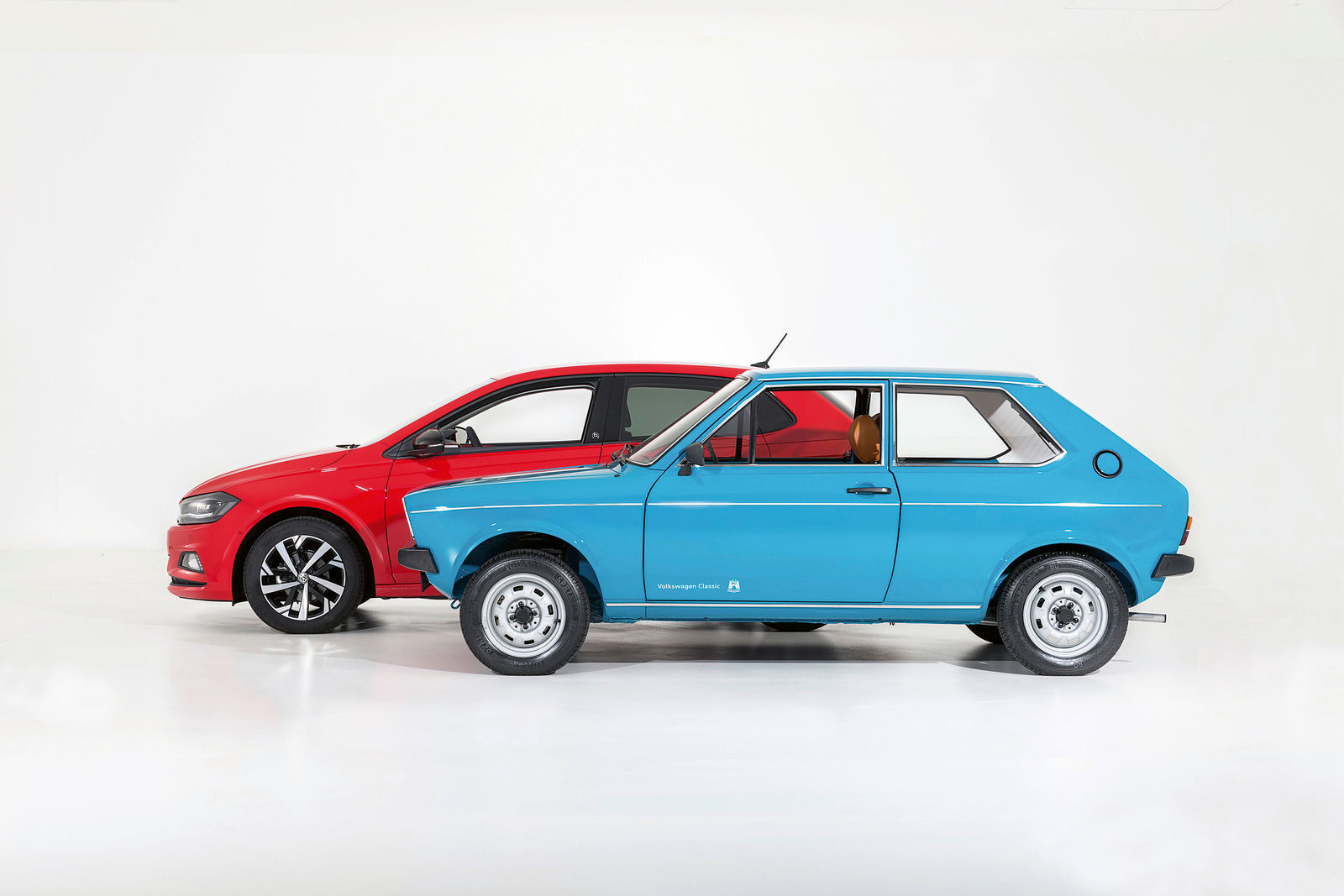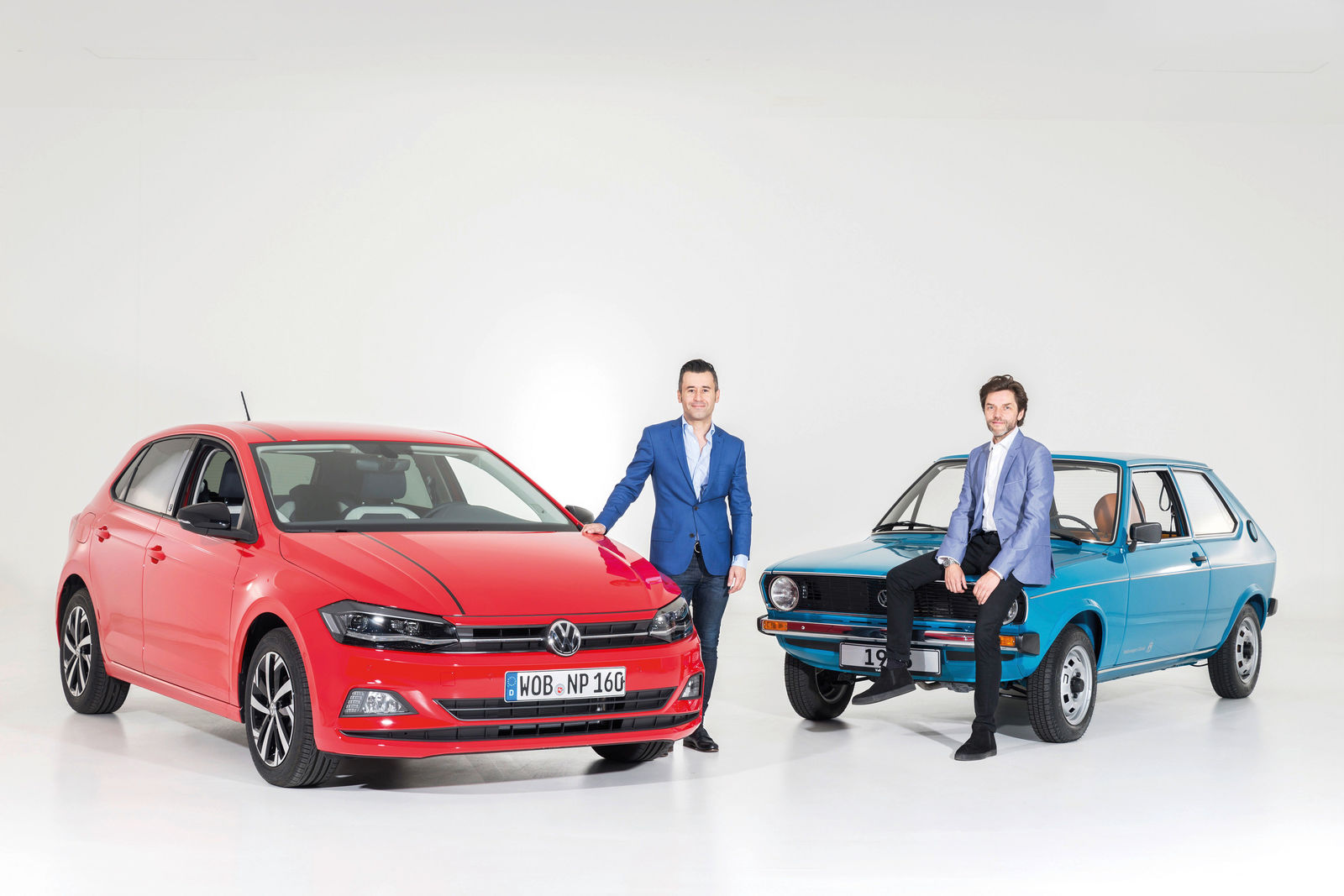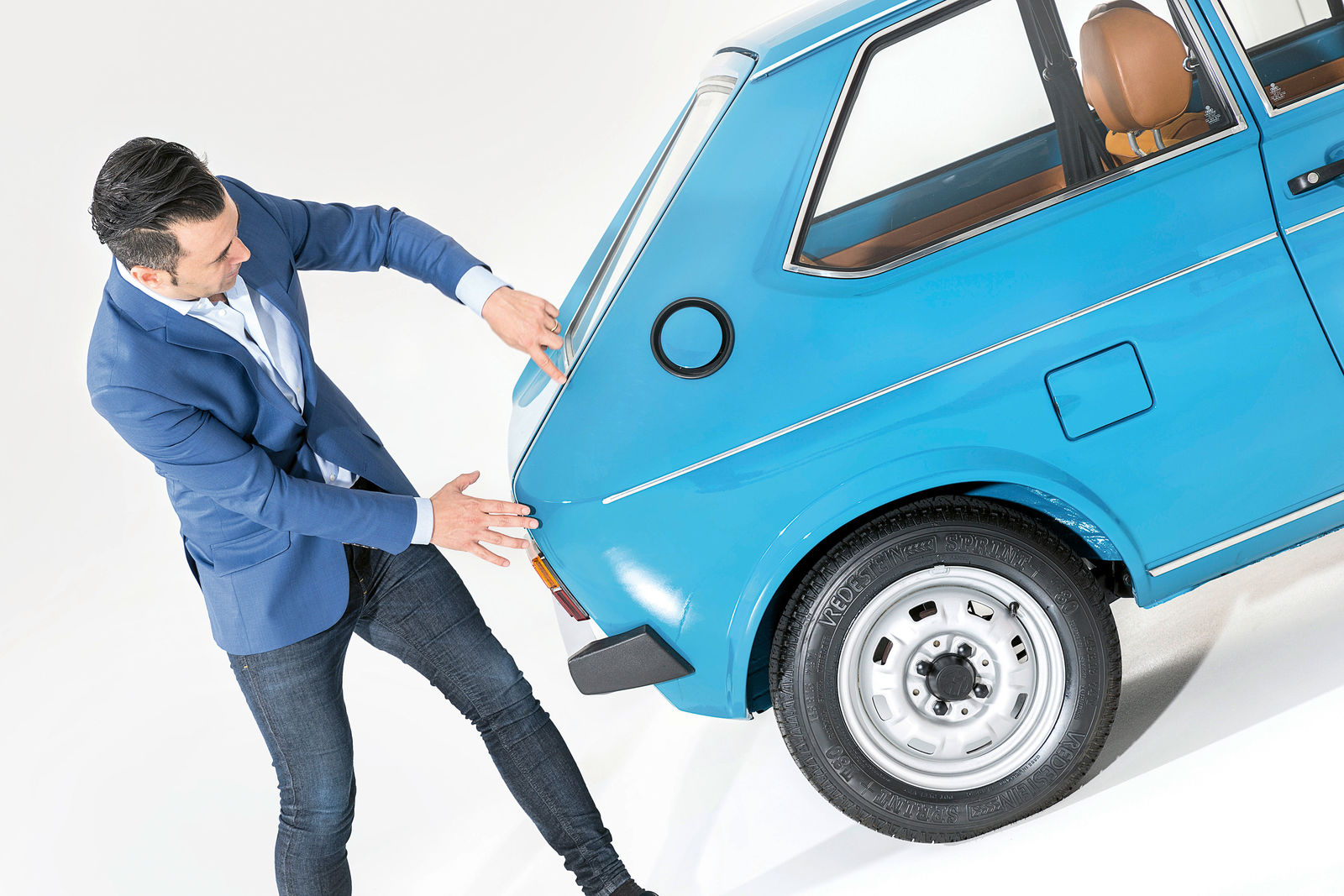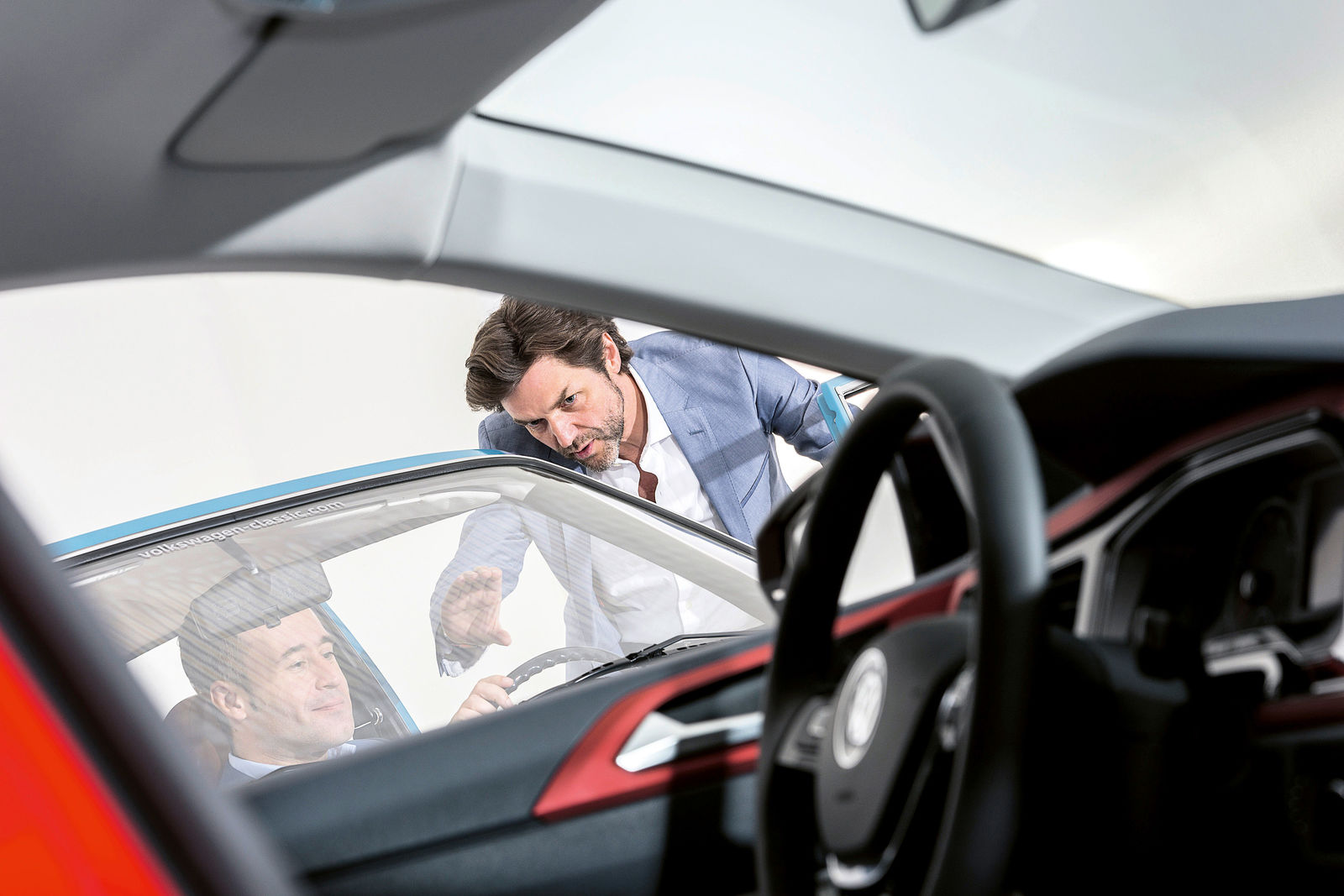Volkswagen designers Tomasz Bachorski and Marco Pavone on the Polo's design
"Evolution and Revolution"
Volkswagen designers Tomasz Bachorski (l.) and Marco Pavone (r.) with the first and the new Polo.
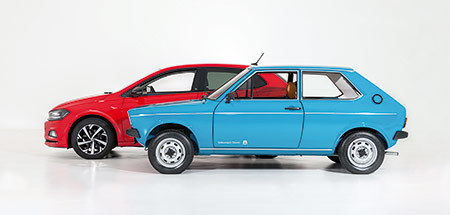
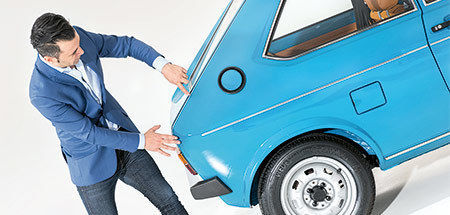
‘The proportions are right. This is light design. It radiates agility!' Marco Pavone energetically follows the outline of the ocean-blue classic. Tomasz Bachorski nods: ‘Absolutely. It looks somehow bold – a bit like it is on the move.' Two creative minds encounter two members of a successful Wolfsburg family; they know each other well. Allow us to introduce Tomasz Bachorski and Marco Pavone. As designers for interior and exterior, they designed the new Polo with their teams. And in the process, they put the first Polo under the microscope.
The Polo was launched in 1975. The new sixth-generation Polo will come out in 2017. Are there similarities?
Marco Pavone: Although the first Polo had completely different dimensions and the new Polo is the largest in its family, the proportions are indeed related: short overhangs, a harmonious distribution of the roof structure in relation to the vehicle length and the dynamics that taper to the front. And very important: the fast C-pillar! It is considerably more dynamic in the new Polo.
Tomasz Bachorski: At the time, the first Polo provided a secure and generous sense of space. With the new Polo, it was about making you feel like in a modern home.
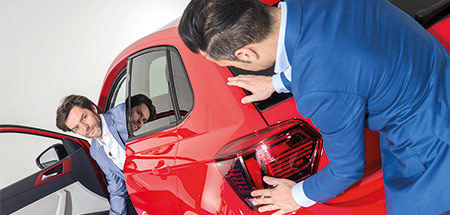
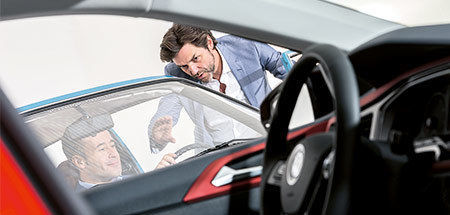
So the predecessors also play a role in the design?
Pavone: Absolutely! At Volkswagen, evolutionary design is the goal overall. Where did the story begin? What is the DNA of the model?
Bachorski: The car should be new – yet also recognisable as the new Polo, inside and outside.
Pavone: The window graphic is a good example. Already in 1975, it was an important design element. And you only get this with the Polo! The long window hinge on the new Polo is merely more dynamic and more powerful. The Polo 2017 shoots forward with its wedge shape, strong shoulder section and tornado silhouette. Overall, it is clearly more masculine, more grown-up – and more emotional.
Bachorski: We have also carried over the good sense of interior space into the future. Our goal: the cockpit must be an experience – new and desirable, but also familiar. With a sense of feeling at home digitally, a sporty automotive interior architecture and driver-oriented design. All instruments and displays are arranged in one visual and operational axis. Of course, today there are many more elements than in the 1970s, but the clarity of that time has inspired us. A sense of well-being like 1975, but also high-tech like 2020.
Pavone: Thus, evolution and revolution.
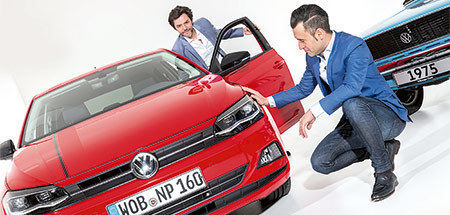
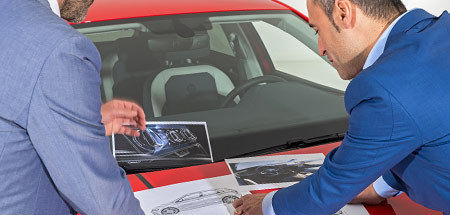
Which specifications significantly influenced the development of the design?
Pavone: There are, of course, always many different factors from all areas that play a role in the development of a vehicle, but one keyword was ‘masculinity'! The new Polo had to be stronger, more powerful, more modern and generally more masculine. The wheel arches, for example, are strongly formed, allowing the Polo to fully hug the road – which makes it pretty sexy!
Bachorski: The interior got more clearer and more specific, with a technical feel. This model has completely different interior proportions, compared to its predecessors; the H-point is lower, for example. The first Polo here is an honest car, absolutely authentic, and we have also incorporated these values in the sixth generation – simply adapted to suit modern lifestyles and expectations.
Pavone: Volkswagen design is logical. The dynamic lines help to structure the surfaces and provide a sense of perspective. The logic can be seen very nicely on the front of the car – all the lines run together to create a masculine dynamism. It is like mathematics: certain factors combined produce a certain result; everything ultimately hangs together.
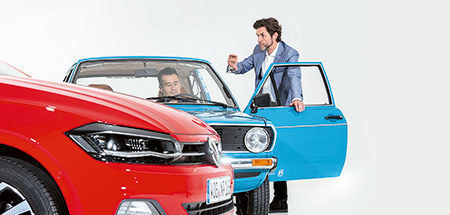
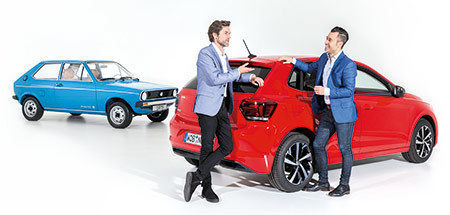
What is the biggest challenge you face as designers?
Bachorski: We have to think incredibly far ahead. About ten years.
Pavone: And to look so far into the future, we really need a crystal ball.
Bachorski: We start working on the design around three or four years before market launch. We analyse social and digital trends and interpret them in a forward-looking car design. Even years after it has entered the market, the car still needs to look modern.
Pavone: Therefore the design must be clear, precise and easy to understand. Thus we need to create something timeless – that is a great challenge, but also a wonderful one.
Bachorski: You could say that good design is like a cool suit. It needs to fit well from the beginning, and even years later, you must still feel perfect in it. With the new Polo, there is the addition that there's a high-end smartphone included in the stylish suit!
And in this, Marco Pavone and Tomasz Bachorski agree: the new Polo will be in style for a long time, it is designed well and, above all, it will be a good fit for all.
